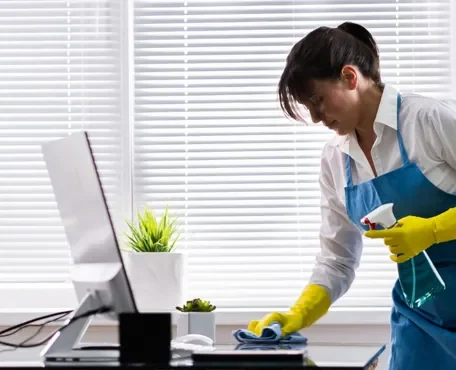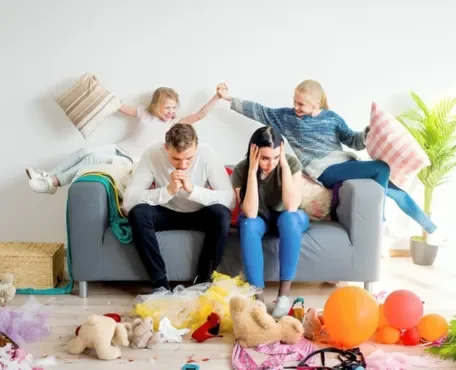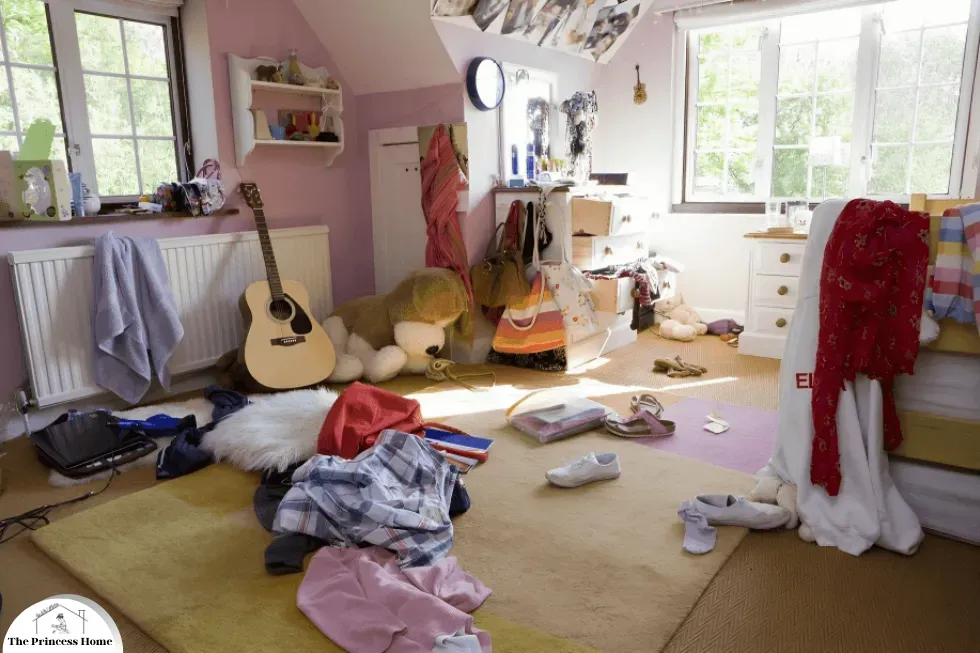
Decluttering is a process that, when done right, can lead to a more organized and stress-free life. The key to success is making well-informed decisions about which items to keep and which ones to discard. Whether you adopt the KonMari method, the 90/90 rule, or other strategies, it’s essential to focus on your goals, functionality, and the emotional value of your possessions. By doing so, you’ll create a living space that truly sparks joy and enhances your overall well-being. Remember that decluttering is a journey, not a destination, and it’s perfectly okay to take your time to achieve your desired results.
Decluttering your living space can be a daunting task, but it is incredibly rewarding. A clean and organized environment can reduce stress, improve productivity, and create a sense of tranquility. However, the process of deciding which items to keep and which ones to discard can be a challenging endeavor.
In this article, we will explore strategies to help you make those tough decisions .
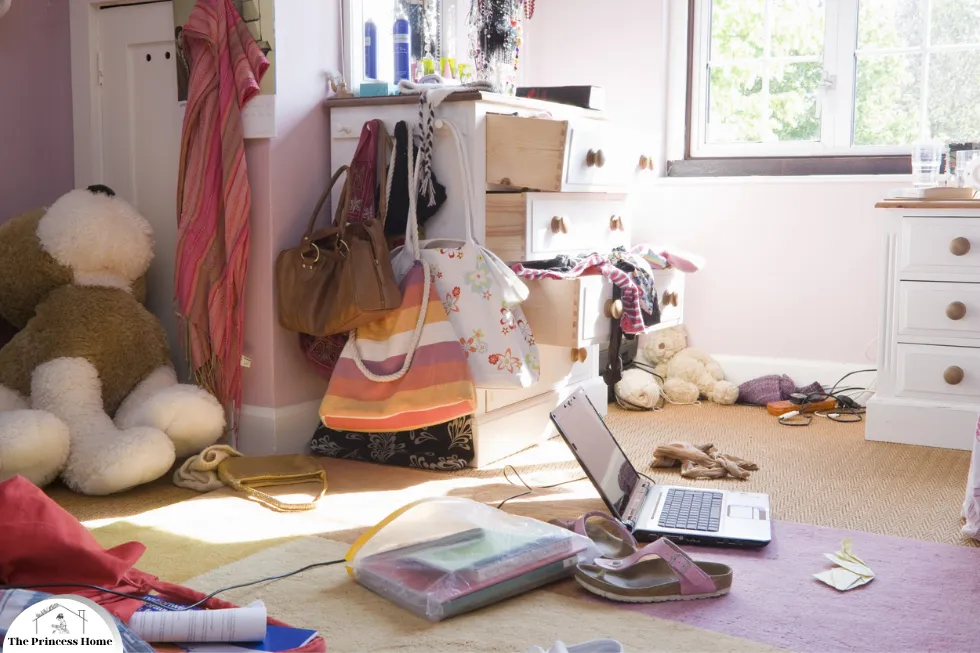
1.Set Clear Goals
Before you dive into the decluttering process, it’s important to set clear goals. Define what you want to achieve with the decluttering project. Is it to create more space, reduce stress, or make your home more aesthetically pleasing? Understanding your goals will help you make more informed decisions about what to keep and what to discard. Setting clear goals is the crucial first step in any decluttering project.
Here’s why it’s so important:
1.Provides Direction:
Without clear goals, you might find yourself aimlessly sorting through belongings without a sense of purpose. Setting specific objectives gives you a roadmap to follow, ensuring that your efforts are focused and productive.
2.Motivation:
Knowing why you’re decluttering can provide the motivation needed to tackle the task. Whether it’s creating a more peaceful living environment or maximizing storage space, having a clear goal in mind can keep you motivated when the going gets tough.
3.Guides Decision-Making:
Your goals serve as a guiding framework for deciding which items to keep and which ones to discard. For example, if your goal is to create more space, you’ll likely be more inclined to part ways with non-essential items that are taking up valuable real estate in your home.
4.Measurable Progress:
Setting quantifiable goals allows you to track your progress throughout the decluttering process. Whether it’s decluttering one room per week or reducing your possessions by a certain percentage, measurable goals provide tangible milestones to work towards.
To set clear goals for your decluttering project, consider the following steps:
1.Reflect on Your Motivation:
Take some time to reflect on why you want to declutter. What pain points are you experiencing in your current living environment? What benefits do you hope to gain from decluttering? Understanding your underlying motivations will help you set meaningful goals.
2.Identify Specific Objectives:
Once you’ve identified your motivation, translate it into specific, actionable goals. For example, if your motivation is to reduce stress, your goal might be to create a clutter-free living room where you can relax and unwind without feeling overwhelmed by clutter.
3.Prioritize Goals:
If you have multiple goals, prioritize them based on their importance to you. Determine which goals will have the greatest impact on your overall well-being and focus your efforts accordingly.
4.Break It Down:
Break down larger goals into smaller, more manageable tasks. For instance, if your goal is to declutter your entire home, break it down room by room or category by category to make the process more manageable.
5.Set a Timeline:
Give yourself a realistic timeline for achieving your goals. Consider factors such as your availability, the size of your decluttering project, and any upcoming deadlines or commitments.
Remember, your goals should be tailored to your unique circumstances and preferences. Whether you’re aiming for a minimalist aesthetic or simply seeking to create a more organized living space, setting clear goals will set you up for success in your decluttering journey.

2.The KonMari Method
Marie Kondo’s KonMari method has gained worldwide recognition for its effectiveness in decluttering. According to Kondo, you should ask yourself, “Does it spark joy?” when deciding whether to keep an item. If an item doesn’t bring you joy, it’s time to let it go. This method emphasizes the emotional connection you have with your possessions.
Indeed, the KonMari Method, developed by organizing consultant Marie Kondo, has revolutionized the way many people approach decluttering. At its core, the KonMari Method is about surrounding yourself only with items that “spark joy” and letting go of the rest.
Here’s how it works:
1.The Joy Check:
When decluttering using the KonMari Method, the central question to ask yourself is whether an item sparks joy. This shifts the focus from simply getting rid of things to actively curating a living space filled only with belongings that bring you happiness.
2.Emotional Connection:
Unlike traditional decluttering methods that prioritize utility or sentimentality, the KonMari Method emphasizes the emotional connection you have with your possessions. By evaluating each item based on its ability to evoke joy, you develop a deeper awareness of your personal preferences and values.
3.Mindfulness:
The KonMari Method encourages mindfulness and intentionality in the decluttering process. Rather than mindlessly discarding items, you are encouraged to approach each object with gratitude for its service and consideration for its future impact on your life.
4.Category-Based Approach:
The KonMari Method organizes decluttering into specific categories, starting with clothing, followed by books, papers, miscellaneous items (komono), and sentimental items. This systematic approach allows you to focus your attention on one category at a time, making the process more manageable and efficient.
5.Tactile Evaluation:
To determine whether an item sparks joy, Kondo suggests physically handling each item and paying attention to your emotional response. Notice how your body reacts to the item—whether it elicits a sense of happiness, warmth, or excitement.
6.Letting Go with Gratitude:
For items that no longer spark joy, Kondo advocates expressing gratitude before letting them go. This act of gratitude acknowledges the role the item has played in your life and allows you to release it with a sense of closure and appreciation.
7.Creating a Joyful Home:
Ultimately, the goal of the KonMari Method is to create a living environment that reflects your values, priorities, and aspirations. By surrounding yourself only with items that spark joy, you cultivate a space that uplifts and energizes you on a daily basis.
While the KonMari Method may not be suitable for everyone, its emphasis on mindfulness, emotional connection, and intentionality has resonated with millions of people worldwide. Whether you’re embarking on a major decluttering project or simply seeking to bring more joy into your life, the KonMari Method offers a refreshing perspective on the relationship between possessions and happiness.
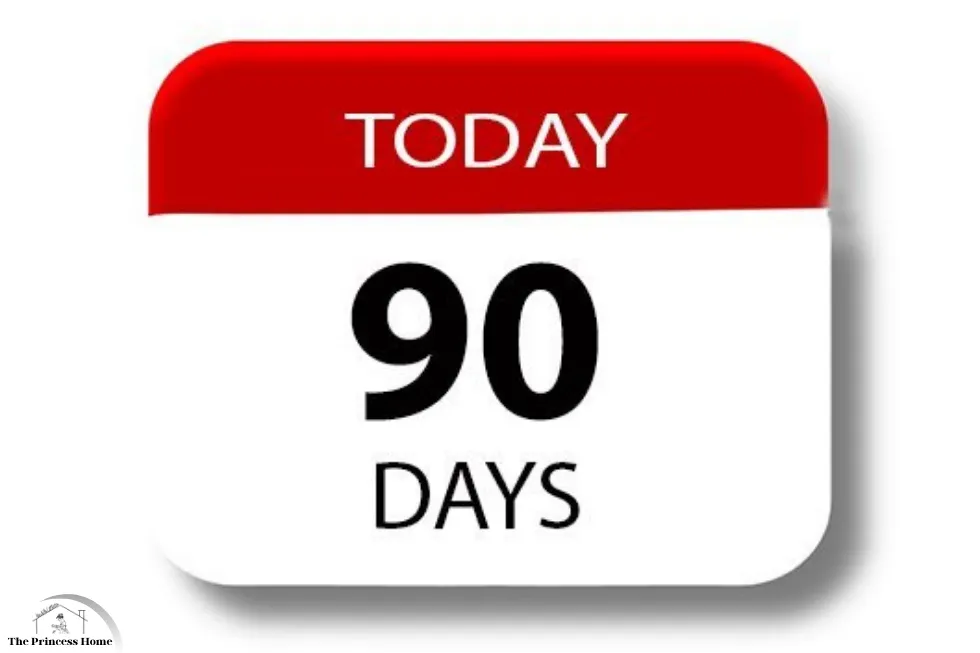
3.The 90/90 Rule
The 90/90 rule is a practical approach to decluttering. Ask yourself, “Have I used this item in the last 90 days, and will I use it in the next 90 days?” If the answer is no, consider discarding the item. This rule helps you focus on the practicality and utility of your possessions. The 90/90 Rule is a pragmatic approach to decluttering that emphasizes the practicality and utility of your possessions.
This rule encourages you to assess whether an item is genuinely useful by asking two simple questions:
- Have I used this item in the last 90 days?
- Will I use it in the next 90 days?
If the answer to both questions is no, then it’s time to consider discarding the item.
Here’s the reason why the 90/90 Rule can serve as a useful method for decluttering:
1.Focus on Utility:
The 90/90 Rule shifts the focus from sentimental attachment or hypothetical future use to the practicality of an item in your day-to-day life. By evaluating whether you’ve used an item recently and are likely to use it in the near future, you can make more objective decisions about its value and necessity.
2.Prevents Clutter Accumulation:
By regularly reassessing your possessions based on the 90/90 Rule, you can prevent clutter from accumulating over time. Instead of holding onto items out of habit or uncertainty, you develop a habit of regularly evaluating and purging items that no longer serve a practical purpose.
3.Streamlines Decision-Making:
The simplicity of the 90/90 Rule makes it easy to apply to various categories of possessions, from clothing and household items to gadgets and accessories. It provides a clear criteria for decision-making, allowing you to quickly determine whether an item deserves to stay or go.
4.Encourages Mindful Consumption:
Adopting the 90/90 Rule encourages more mindful consumption habits. Before acquiring new items, you’re prompted to consider whether they align with your current needs and lifestyle. This can help curb impulse purchases and reduce the likelihood of accumulating unnecessary clutter in the future.
5.Creates Space for What Matters:
By decluttering based on the 90/90 Rule, you free up physical and mental space for the things that truly matter to you. Letting go of unused or underutilized possessions allows you to create a more functional and intentional living environment, where each item serves a purpose and adds value to your life.
While the 90/90 Rule provides a helpful guideline for decluttering, it’s important to adapt it to your individual circumstances and preferences. Some items, such as seasonal or specialized tools, may not adhere strictly to the 90-day timeframe but still hold value in certain contexts. Use the 90/90 Rule as a tool to support your decluttering efforts, but also trust your instincts and personal judgment when deciding what to keep and what to discard.
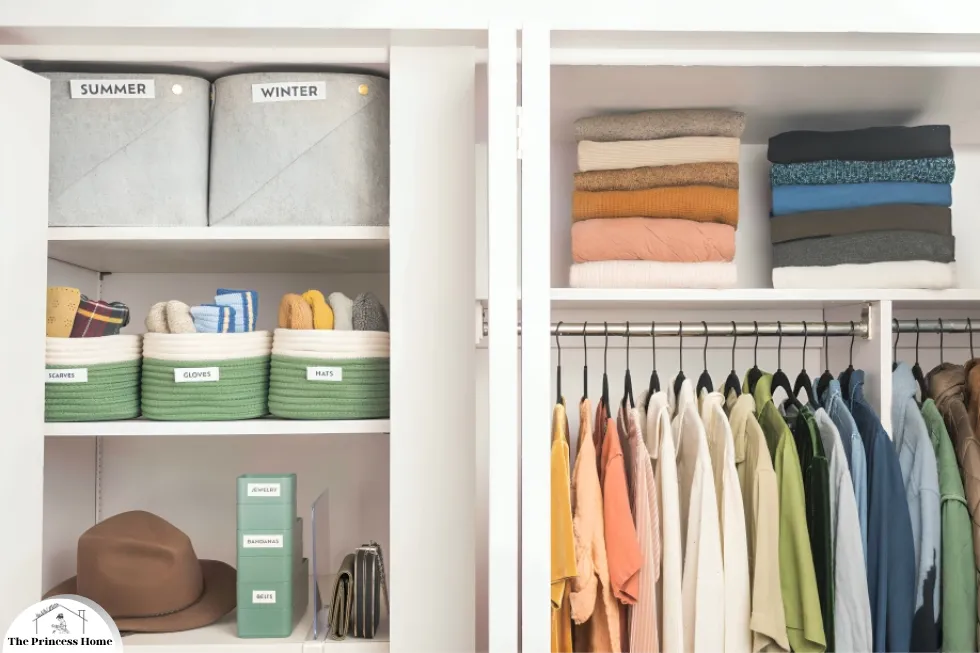
4.Sorting Items by Category
Another effective strategy is to sort items by category, not by room. For example, gather all your clothing, books, or kitchen items in one place. This allows you to see the full extent of your possessions and makes it easier to compare similar items to determine which ones to keep.
Sorting items by category, rather than by room, is an efficient and effective strategy for decluttering. This method, popularized by organizing experts like Marie Kondo, allows you to take a comprehensive inventory of your belongings and make more informed decisions about what to keep and what to discard.
Here’s why sorting by category can streamline the decluttering process:
1.Comprehensive Assessment:
When you gather all items from the same category in one place, you get a complete overview of your possessions. This allows you to see the full extent of what you own and makes it easier to identify duplicates, excess items, and overlooked belongings.
2.Comparative Evaluation:
Sorting items by category enables you to compare similar items side by side. This comparative approach helps you assess each item’s utility, condition, and emotional significance more accurately. For example, when decluttering clothing, you can compare similar shirts, pants, or dresses to determine which ones you truly love and wear regularly.
3.Identifying Patterns:
By seeing all your belongings within a specific category together, you may notice patterns or trends in your consumption and storage habits. This insight can help you identify areas where you may be accumulating excess or where you can optimize storage solutions to better accommodate your needs.
4.Efficient Decision-Making:
Sorting by category allows you to focus your decluttering efforts on one type of item at a time, reducing decision fatigue and overwhelm. Instead of jumping from room to room, you can systematically work through each category, making the process more efficient and manageable.
5.Maximizing Space:
Once you’ve decluttered and organized items within a specific category, you can assess how much space they require and determine the most suitable storage solutions. This ensures that your belongings are stored in a way that maximizes space and promotes accessibility, making it easier to maintain a clutter-free environment in the long run.
To effectively sort items by category, follow these steps:
1.Identify Categories:
Make a list of the main categories of items you want to declutter, such as clothing, books, kitchen items, sentimental items, etc.
2.Gather Items:
Go through each room in your home and gather all items that belong to each category. Place them in a designated sorting area where you can easily access and assess them.
3.Evaluate Each Item:
As you go through each category, evaluate each item based on criteria such as utility, condition, and emotional significance. Decide whether to keep, donate, sell, or discard each item accordingly.
4.Organize and Store:
Once you’ve decluttered each category, organize the remaining items and store them in a way that makes sense for your lifestyle and space constraints. Use storage solutions such as bins, shelves, and containers to keep items organized and easily accessible.
By sorting items by category, you can declutter your home more effectively and create a living environment that is both functional and harmonious.
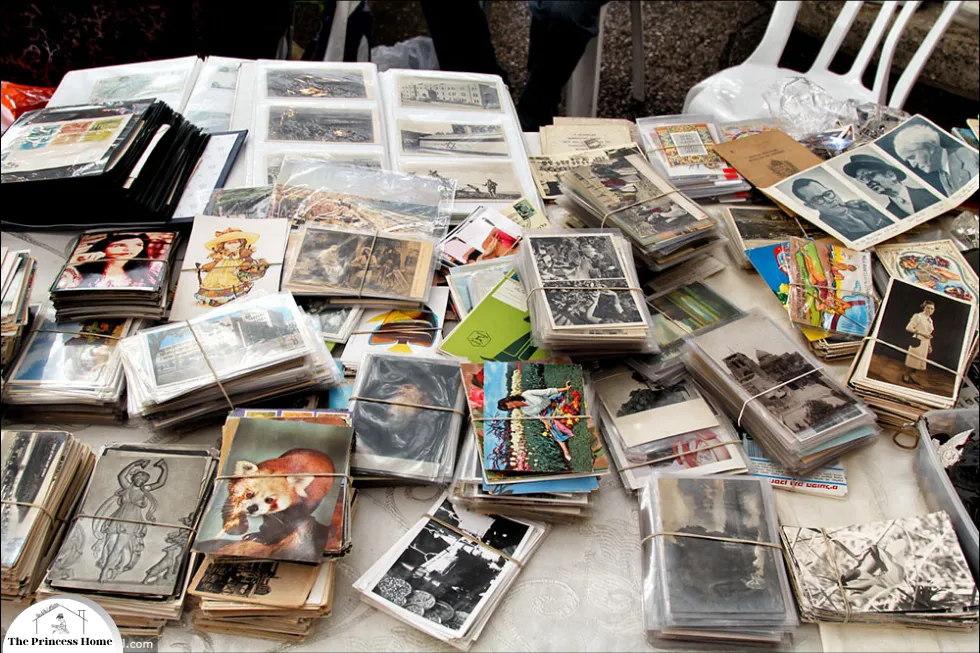
5.Sentimental Items
Sentimental items often present the most significant challenge during decluttering. It’s important to recognize that you can’t keep everything. Instead, consider taking photographs of items with sentimental value and creating a digital memory album. This allows you to keep the memory while reducing physical clutter.
Dealing with sentimental items can indeed be one of the toughest aspects of decluttering. These items often hold deep emotional significance, making it difficult to part with them. However, it’s essential to strike a balance between honoring memories and maintaining a clutter-free living space.
Here’s how you can approach decluttering sentimental items:
1.Acknowledge the Emotional Attachment:
Recognize that sentimental items evoke strong emotions and may trigger memories of significant moments or relationships in your life. It’s okay to feel attached to these items, but also understand that memories reside within you, not necessarily within the physical objects themselves.
2.Evaluate Each Item:
When decluttering sentimental items, evaluate each item individually and consider its significance in your life. Ask yourself why it holds sentimental value and whether it aligns with your current lifestyle and priorities. Be selective about which items you choose to keep and prioritize those that bring you the most joy or hold the deepest meaning.
3.Photograph and Digitize:
Consider taking photographs of sentimental items before letting go of them. This allows you to preserve the memories associated with the items without the need to keep them physically. Create a digital memory album or folder where you can store these photographs, along with any relevant notes or anecdotes. Digitalizing sentimental items not only reduces physical clutter but also makes it easier to revisit and share memories in the future.
4.Curate a Memory Box:
If you prefer to keep some physical mementos, consider curating a memory box or shadow box containing a selection of your most cherished items. Limit the size of the box to prevent it from becoming overcrowded and choose items that represent a variety of meaningful experiences. Display the memory box in a prominent place where you can appreciate it regularly.
5.Share and Pass Down:
Some sentimental items may hold significance for other family members or loved ones. If you have items that you no longer wish to keep but that have sentimental value to others, consider gifting or passing them down. This ensures that the items continue to be cherished and appreciated, even if they’re no longer in your possession.
6.Letting Go with Gratitude:
As you declutter sentimental items, express gratitude for the role they’ve played in your life. Acknowledge the memories and emotions they represent, and thank them for the joy they’ve brought you. Letting go with gratitude can help ease the emotional weight of parting with cherished possessions and foster a sense of closure.
Remember that decluttering sentimental items is a personal journey, and there’s no one-size-fits-all approach. It’s essential to honor your emotions and make decisions that feel right for you. By finding a balance between preserving memories and reducing physical clutter, you can create a living environment that supports your emotional well-being and reflects your values and priorities.
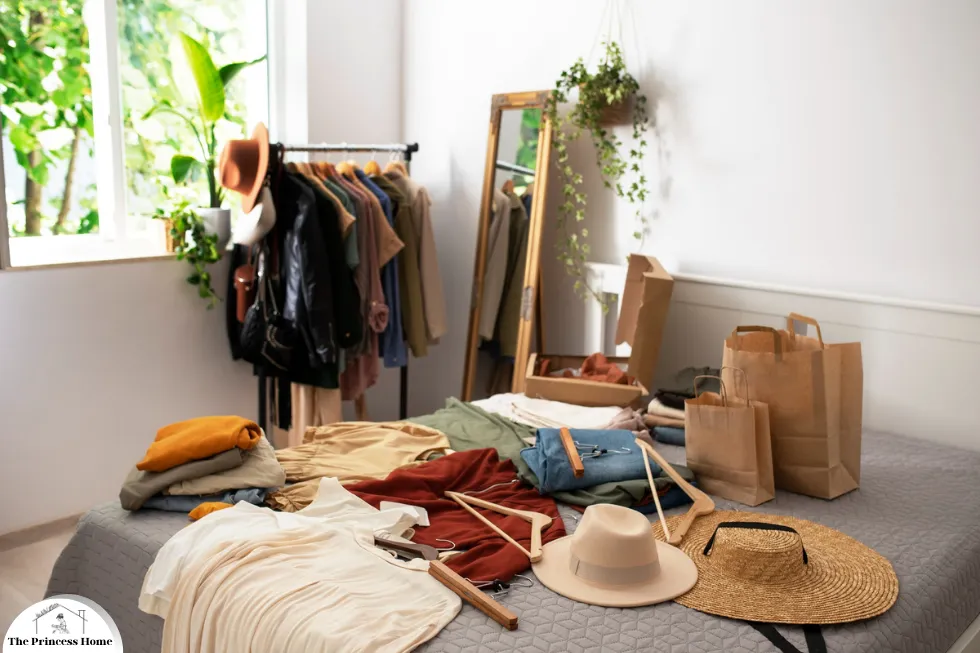
6.Declutter Gradually
Decluttering doesn’t have to be an all-or-nothing endeavor. You can declutter gradually, focusing on one area at a time. This approach is less overwhelming and allows you to give proper thought to each item. decluttering gradually is a practical and sustainable approach that can make the process more manageable and less overwhelming.
Here’s why taking it one step at a time can be effective:
1.Less Overwhelming:
Tackling an entire home or even a single room all at once can feel daunting. By decluttering gradually, you break the task into smaller, more manageable chunks, making it less overwhelming and more approachable.
2.Focused Attention:
When you declutter gradually, you can devote focused attention to each area or category of belongings. This allows you to thoroughly assess each item, make thoughtful decisions, and create a space that reflects your values and priorities.
3.Better Decision-Making:
Decluttering gradually gives you the time and space to make well-considered decisions about each item. Rather than rushing through the process, you can take the time to evaluate the utility, sentimental value, and emotional significance of your possessions, leading to more effective decluttering outcomes.
4.Incorporate into Routine:
By integrating decluttering into your regular routine, whether it’s dedicating a few minutes each day or setting aside a specific day of the week, you create consistency and momentum. Over time, these small, consistent efforts can lead to significant progress in reducing clutter and maintaining an organized living space.
5.Builds Habits:
Decluttering gradually helps you develop decluttering habits that become second nature over time. As you make decluttering a regular part of your routine, you’ll become more mindful of your consumption habits, more adept at letting go of unnecessary items, and better equipped to maintain a clutter-free environment in the long term.
6.Celebrate Progress:
Celebrate your progress along the way. Whether you’ve cleared out a closet, organized a drawer, or decluttered a shelf, each small accomplishment brings you closer to your decluttering goals. Acknowledge and celebrate these victories to stay motivated and inspired to continue decluttering.
To declutter gradually, consider the following steps:
1.Start Small:
Begin with a manageable area or category, such as a single drawer, closet, or bookshelf. Breaking the task into smaller segments makes it easier to get started and build momentum.
2.Set Realistic Goals:
Set achievable goals for each decluttering session, whether it’s decluttering a specific number of items or spending a designated amount of time on the task. Setting realistic goals helps you stay focused and motivated.
3.Establish a Routine:
Incorporate decluttering into your regular routine by scheduling dedicated decluttering sessions on a consistent basis. Whether it’s daily, weekly, or monthly, find a cadence that works for you and stick to it.
4.Prioritize Areas:
Focus on areas of your home that are causing the most stress or clutter-related challenges. By prioritizing these areas, you can make the most significant impact on your living environment and overall well-being.
5.Be Patient & Kind to Yourself:
Decluttering is a process, and it’s okay to progress at your own pace. Be patient with yourself and acknowledge that decluttering takes time and effort. Celebrate your achievements along the way, no matter how small, and be kind to yourself throughout the journey.
By decluttering gradually, you can create lasting change in your living environment while minimizing stress and overwhelm. Remember that every small step forward brings you closer to a clutter-free and more organized home.

7.The One-Year Rule
The one-year rule is a straightforward guideline: If you haven’t used or worn an item in the past year, it’s a candidate for removal. This rule is especially useful for clothing, gadgets, and other non-essential items. The One-Year Rule is a practical guideline that helps simplify the decluttering process by providing a straightforward criterion for evaluating the usefulness of items. The premise is simple: If you haven’t used or worn an item in the past year, it may no longer serve a practical purpose in your life and is therefore a candidate for removal.
Here’s why the One-Year Rule can be an effective decluttering tool:
1.Clear Criteria:
The One-Year Rule offers a clear and objective criterion for evaluating items. Rather than relying on subjective judgments or sentimental attachments, you can assess each item based on its recent use, making the decision-making process more straightforward and less emotionally charged.
2.Promotes Practicality:
By focusing on whether an item has been used or worn within the past year, the One-Year Rule emphasizes practicality and utility. It encourages you to prioritize items that actively contribute to your daily life and let go of those that have become obsolete or redundant over time.
3.Reduces Clutter:
Applying the One-Year Rule helps prevent clutter from accumulating by prompting you to regularly reassess your possessions and remove items that no longer serve a purpose. This proactive approach to decluttering can lead to a more streamlined and organized living environment.
4.Saves Space and Resources:
Letting go of items that haven’t been used or worn in the past year frees up valuable space in your home and reduces the need for storage. It also prevents you from holding onto items that could be better utilized by someone else, thereby minimizing waste and promoting sustainability.
5.Encourages Mindful Consumption:
Adopting the One-Year Rule encourages more mindful consumption habits by prompting you to consider the long-term value and relevance of your purchases. Before acquiring new items, you’re encouraged to think critically about whether they will truly enhance your life and be used regularly.
While the One-Year Rule is particularly well-suited for decluttering clothing, gadgets, and other non-essential items, it can also be applied to a wide range of possessions, including household goods, decor, and recreational equipment. However, it’s important to note that certain items may have seasonal or occasional use and may not adhere strictly to the one-year timeframe. Use your judgment to adapt the rule to your individual circumstances and needs.
To apply the One-Year Rule effectively, follow these steps:
- Gather Items: Collect items within a specific category or area of your home that you’re considering decluttering.
- Evaluate Each Item: Assess each item based on whether you’ve used or worn it within the past year. Be honest with yourself about its relevance and usefulness in your current lifestyle.
- Make Decisions: Decide whether to keep, donate, sell, or discard each item based on the results of your evaluation. Items that haven’t been used or worn in the past year are prime candidates for removal.
- Take Action: Take action on the items you’ve identified for removal, whether it’s donating them to charity, selling them online or at a garage sale, or responsibly disposing of them.
By applying the One-Year Rule consistently and thoughtfully, you can streamline your possessions, reduce clutter, and create a living environment that is more aligned with your current needs and priorities.

8.Evaluate Functionality
When deciding whether to keep or discard something, consider its functionality. Is it broken, outdated, or redundant? If the item serves no functional purpose, it’s a strong candidate for disposal. Assessing functionality is a key aspect of effective decluttering. When deciding whether to keep or discard an item, evaluating its functionality can help you make practical and informed decisions.
Here’s why considering functionality is important and how you can apply this criterion during the decluttering process:
1.Practicality:
Functionality is closely tied to practicality. An item that serves a functional purpose is more likely to be useful and contribute to your daily life. By assessing functionality, you prioritize items that enhance your living environment and fulfill your needs.
2.Space Optimization:
Keeping functional items ensures that you make the most of your available space. Discarding broken, outdated, or redundant items frees up valuable space in your home, allowing you to organize and store essential belongings more efficiently.
3.Reduced Clutter:
Eliminating items that serve no functional purpose helps reduce clutter and streamline your living space. Clutter can create visual chaos and make it challenging to find and access the items you need. By decluttering non-functional items, you create a more organized and visually appealing environment.
4.Minimized Maintenance:
Functional items require less maintenance and upkeep compared to non-functional ones. Broken or outdated items may require repairs, replacement parts, or special attention to keep them in working condition. By decluttering non-functional items, you reduce the time and effort spent on maintenance tasks.
5.Enhanced Safety:
Broken or malfunctioning items can pose safety hazards, especially if they have sharp edges, electrical issues, or other potential dangers. Removing non-functional items helps create a safer living environment for you and your family.
To evaluate functionality when decluttering, consider the following steps:
- Inspect Each Item: Take a close look at each item and assess its condition and usability. Determine whether it is broken, outdated, or no longer serves its intended purpose.
- Consider Redundancy: Evaluate whether you have multiple items that serve the same function. If so, determine whether you need all of them or if you can pare down to just the essentials.
- Ask Yourself Questions: When deciding whether to keep or discard an item, ask yourself the following questions:
- Does the item still work as intended?
- Is it in good condition, or is it broken, damaged, or missing parts?
- Do I have a need for this item, or is it redundant?
- Will keeping this item contribute to my daily life in a meaningful way?
- Make Decisions: Based on your assessment, decide whether to keep, donate, sell, or discard each item. Items that are broken, outdated, or no longer functional are strong candidates for disposal.
By evaluating functionality during the decluttering process, you can prioritize items that serve a practical purpose and create a more organized, efficient, and enjoyable living space.
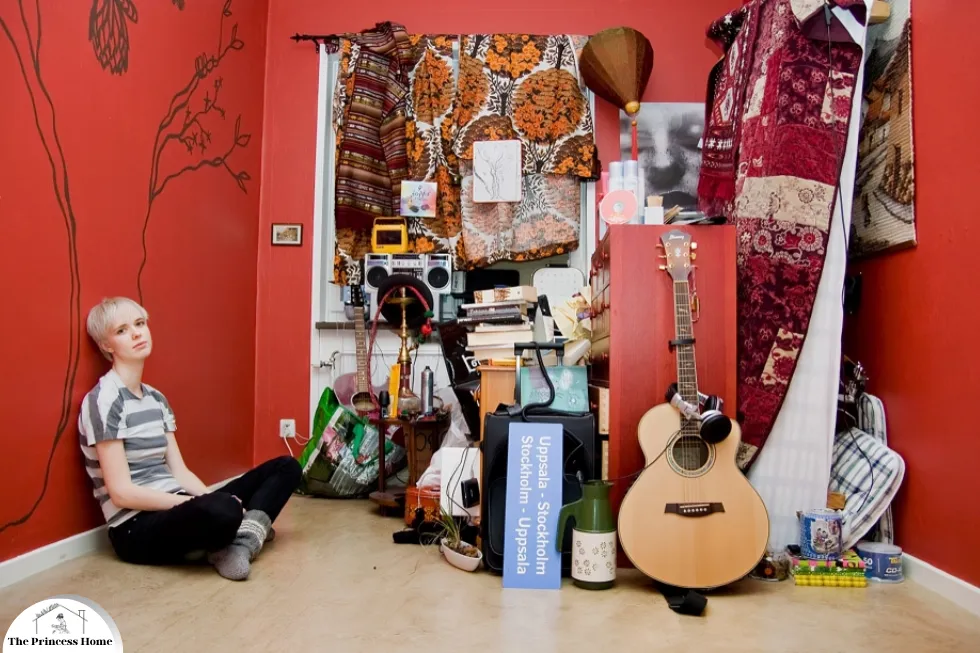
9.Avoid the Sunk Cost Fallacy
The sunk cost fallacy is the idea that you should keep something because you’ve invested time or money into it. However, this type of thinking can lead to clutter. Instead, evaluate an item’s current value and future usefulness independently of what you’ve invested in it in the past.
Avoiding the sunk cost fallacy is crucial when decluttering, as it can prevent you from making rational decisions about your possessions. The sunk cost fallacy is the tendency to continue investing in something because you’ve already invested time, money, or effort into it, even if it no longer serves a practical purpose or brings value into your life.
Here’s why it’s important to recognize and overcome this fallacy during the decluttering process:
1.Objectivity:
Overcoming the sunk cost fallacy allows you to evaluate each item objectively, based on its current value and future usefulness, rather than being influenced by past investments. This objective assessment enables you to make more rational decisions about whether to keep or discard an item.
2.Clutter Reduction:
Holding onto items solely because you’ve invested in them in the past can lead to clutter accumulation and contribute to a disorganized living space. By letting go of items that no longer serve a purpose, you can reduce clutter and create a more streamlined and functional environment.
3.Freedom of Choice:
Overcoming the sunk cost fallacy gives you the freedom to make decisions based on your current needs, preferences, and priorities, rather than feeling obligated to keep something out of a sense of attachment or obligation.
4.Resource Optimization:
Discarding items that no longer bring value into your life allows you to optimize your resources, including time, space, and energy. Instead of expending additional resources on maintaining or storing unnecessary possessions, you can redirect them towards more meaningful pursuits.
To avoid the sunk cost fallacy when decluttering, consider the following strategies:
1.Focus on the Present and Future:
When evaluating whether to keep or discard an item, focus on its current value and potential usefulness in the future, rather than dwelling on past investments. Ask yourself whether the item aligns with your current needs, lifestyle, and priorities.
2.Let Go of Guilt:
Recognize that it’s okay to let go of items, even if you’ve invested time, money, or sentimental value into them in the past. Holding onto items out of guilt or obligation only perpetuates clutter and prevents you from creating a more intentional living space.
3.Consider Alternative Uses:
If you’re hesitant to part with an item due to past investments, consider whether there are alternative uses or ways to repurpose it that align with your current needs and preferences. If not, it may be time to let go and make space for something new.
4.Practice Mindfulness:
Be mindful of your emotions and thought patterns when decluttering. Notice if you’re feeling attached to an item due to past investments and remind yourself to focus on its present value and future usefulness instead.
By overcoming the sunk cost fallacy, you can make more informed and intentional decisions about your possessions, leading to a clutter-free and more fulfilling living environment. Remember that letting go of items that no longer serve a purpose is not a loss but an opportunity to create space for the things that truly matter to you.
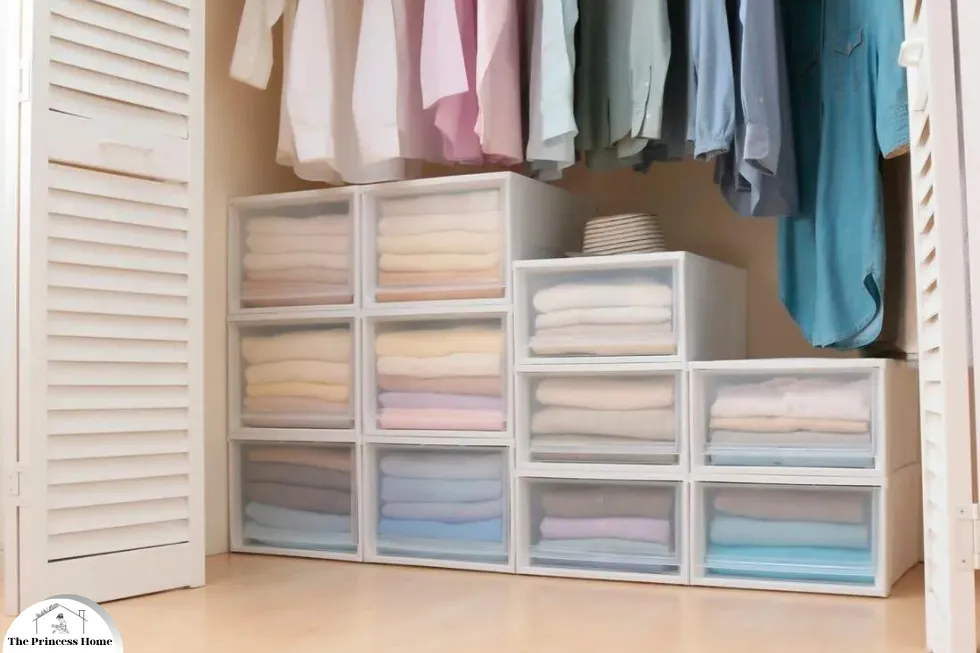
10.Organizing &Storage Solutions
Sometimes, the decision isn’t about discarding but about finding better storage solutions. Invest in storage containers, shelves, and organizational tools to keep your essentials neat and accessible. This can help create a more organized living space.
Investing in storage solutions and organizational tools is a practical approach to decluttering and maintaining an organized living space. By optimizing storage and maximizing efficiency, you can effectively manage your belongings and create a more functional and aesthetically pleasing environment.
Here’s why organizing and storage solutions are essential for decluttering:
1.Maximizes Space:
Storage solutions help you make the most of your available space, whether you live in a small apartment or a spacious home. By utilizing vertical space with shelves, utilizing underutilized areas such as closets and cabinets, and employing space-saving solutions like storage bins and baskets, you can optimize storage capacity and reduce clutter.
2.Enhances Accessibility:
Organizing tools such as bins, dividers, and labels make it easier to locate and access items when you need them. By categorizing and arranging belongings in a logical manner, you can streamline daily routines and minimize time spent searching for misplaced items.
3.Reduces Visual Clutter:
Clutter can create visual chaos and make a space feel overwhelming and disorganized. Storage solutions allow you to neatly store and conceal items, reducing visual clutter and creating a more visually pleasing environment.
4.Promotes Order and Efficiency:
An organized living space promotes a sense of order and tranquility, making it easier to navigate and enjoy your home. By establishing designated storage areas for specific categories of items and implementing efficient organizational systems, you can maintain a tidy and harmonious living environment.
5.Facilitates Decluttering Maintenance:
Storage solutions not only help you declutter initially but also facilitate ongoing maintenance. By providing designated spaces for each item and establishing organizational systems, you can prevent clutter from accumulating and maintain an organized living space with minimal effort.
When selecting storage solutions and organizational tools, consider the following factors:
1.Functionality:
Choose storage solutions that align with your needs and lifestyle. Consider factors such as ease of use, accessibility, and durability when selecting containers, shelves, and other organizational tools.
2.Space Constraints:
Take into account the size and layout of your living space when choosing storage solutions. Opt for space-saving solutions such as collapsible bins, wall-mounted shelves, and stackable organizers to maximize storage capacity in small or awkwardly shaped areas.
3.Aesthetic Appeal:
Select storage solutions that complement your decor and personal style. Choose containers, baskets, and shelving units in colors and materials that enhance the visual appeal of your home while maintaining functionality.
4.Versatility:
Look for storage solutions that offer versatility and adaptability. Choose modular storage systems that can be easily reconfigured or expanded to accommodate changing storage needs over time.
By investing in storage solutions and organizational tools that are functional, space-efficient, visually appealing, and versatile, you can effectively declutter your home and create a more organized and enjoyable living space. Remember that decluttering is an ongoing process, and regularly reassessing your storage needs and organizational systems can help maintain a clutter-free environment in the long term.

11.Seek Input from Others
If you’re struggling to make decisions, ask for input from a friend or family member. A fresh perspective can help you see your possessions in a new light and make the process less emotionally challenging. let’s dive deeper into each of the strategies and provide more tips to help you make informed decisions when decluttering.
Seeking input from others can be a valuable strategy when decluttering, especially if you’re struggling to make decisions or feeling overwhelmed by the process.
Here are some tips to help you effectively seek input from friends or family members:
1.Choose Trusted Individuals:
Seek input from friends or family members whose opinions you value and trust. Choose individuals who understand your lifestyle, preferences, and decluttering goals, and who can offer constructive feedback without judgment.
2.Set Clear Guidelines:
Before seeking input, establish clear guidelines and criteria for decluttering. Communicate your goals, priorities, and any specific concerns or challenges you’re facing. Provide context about the items you’re decluttering, such as their significance, usage patterns, and emotional attachment.
3.Ask Specific Questions:
Instead of simply asking for general feedback, ask specific questions to guide the conversation. For example, you might ask:
- “Do you think I should keep or discard this item?”
- “Do you see any practical use for this item in my life?”
- “Does this item hold sentimental value, or is it worth keeping for any other reason?”
- “Is there a better way to organize or store these items?”
1.Be Open to Different Perspectives:
Keep an open mind and be receptive to different viewpoints and suggestions. Remember that others may see your possessions from a fresh perspective and offer insights or ideas that you hadn’t considered. Be willing to consider alternative viewpoints and be open to letting go of items if they no longer serve a purpose.
2.Consider Collaborative Decluttering:
If possible, involve friends or family members in the decluttering process directly. Collaborative decluttering sessions can make the process more enjoyable and efficient, as you can bounce ideas off each other, share memories associated with items, and provide mutual support and encouragement.
3.Set Boundaries:
While seeking input from others can be helpful, it’s essential to maintain boundaries and ultimately make decisions that align with your own values and priorities. Consider the feedback you receive, but ultimately trust your instincts and make choices that feel right for you.
4.Express Gratitude:
Show appreciation for the input and support you receive from friends or family members. Whether they help you make decisions, offer moral support, or assist with decluttering tasks, express gratitude for their assistance and acknowledge the value they bring to the process.
By seeking input from trusted individuals, you can gain fresh perspectives, make more informed decisions, and navigate the decluttering process with greater confidence and clarity. Remember that decluttering is a personal journey, and it’s okay to seek support and guidance from others along the way.

12Charity and Recycling:
- Donating items to charity is a wonderful way to give new life to things you no longer need. It also promotes a sense of goodwill and contributes to a greater cause. Be sure to research local charities and their donation guidelines.
- Recycling is an eco-friendly way to dispose of items like electronics, paper, cardboard, and plastics. It’s important to recycle responsibly to reduce your environmental footprint.
1.Organizing and Storage Solutions:
Sometimes, decluttering is more about organization. Invest in storage containers, shelves, and organizational tools to make better use of your space. Clear and labeled containers can help you easily find and access items when needed.
2.Seek Input from Others:
If you’re having a tough time letting go of certain items, invite a friend or family member to assist you. They can provide an objective perspective and help you make rational decisions.
Conclusion
Decluttering is a transformative process that can lead to a more harmonious and organized living environment. Remember that the key to successful decluttering is making conscious and informed decisions about what to keep and what to discard. Whether you follow a specific method or a combination of strategies, the ultimate goal is to create a living space that brings you joy, minimizes stress, and enhances your overall quality of life. The journey of decluttering is a personal one, so go at your own pace and embrace the positive changes it brings to your home and well-being.
let’s address some frequently asked questions related to decluttering
Q1: How can I overcome the emotional attachment to sentimental items when decluttering?
A1: Overcoming emotional attachment to sentimental items can be challenging.
To make this process easier, consider the following strategies:
- Take a photo: Take a picture of the sentimental item to preserve the memory without the physical clutter.
- Create a memory box: Designate a small, specific space for sentimental items so that you limit the amount you keep.
- Share stories: Share stories and memories associated with the items with family and friends. This can help you feel like you’re passing on the sentiment.
Q2: What do I do with items that are still in good condition but I no longer need?
A2: Items in good condition that you no longer need can be responsibly disposed of or given a new purpose:
- Donate: Consider donating to local charities, thrift shops, or organizations that can benefit from your unused items.
- Sell: If the item has value, you can sell it online through platforms like eBay or local marketplaces.
- Gift: Offer the item to friends or family who might have a use for it.
- Upcycle: Get creative and repurpose items into something new or different to give them a fresh purpose.
Q3: How do I decide what to keep when it comes to paperwork and documents?
A3: Deciding what paperwork and documents to keep depends on their importance and legal requirements:
- Essential documents: Keep items like birth certificates, passports, wills, and insurance policies in a safe place.
- Financial records: Maintain tax returns, bank statements, and receipts for a specific period (usually 3-7 years) as required by tax authorities.
- Shred unnecessary items: Dispose of outdated bills, junk mail, and documents that contain sensitive information by shredding them to protect your privacy.
Q4: What if I feel overwhelmed by the decluttering process?
A4: Feeling overwhelmed during decluttering is common, but there are ways to manage it:
- Break it down: Divide your decluttering project into smaller, manageable tasks, focusing on one area at a time.
- Set a timer: Allocate a specific amount of time each day to declutter. Even 15-30 minutes can make a difference.
- Seek help: Involve a friend or family member to provide support and motivation.
Q5: How do I maintain a clutter-free environment after decluttering?
A5: Maintaining a clutter-free environment is an ongoing process:
- Regularly reassess: Make decluttering a routine and reevaluate your possessions periodically to prevent new clutter from accumulating.
- One-in, one-out rule: When you acquire a new item, consider letting go of an old one to maintain a balance.
- Organize and label: Use storage solutions and labeling to keep your items organized and easily accessible.
Remember that decluttering is a personal journey, and it’s essential to tailor your approach to your own goals and circumstances. The ultimate aim is to create a living space that aligns with your vision and enhances your overall well-being.



